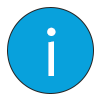 Liza Boormans
Liza Boormans
 Stijn Kamermans
Stijn Kamermans
Blue Jay Eindhoven
These days, health professionals and caregivers are experiencing an extremely high workload. In the Netherlands, especially the elderly population is increasing but at the same time the amount of caregivers is stagnated. As a result, the quality of care they can provide is decreasing and there is less time for the human aspect of care. Thereby, in healthcare institutions and hospitals, there are situations requiring supervision of the wellbeing and first-response aid of an individual or a group. As a result of shortcoming of nurses, monitoring groups of patients is difficult.
Team Blue Jay develops indoor, autonomous drones for in healthcare. Blue Jay can serve as an assistant to nurses and patients. The drone can help them with their daily routines. It knows exactly 'who' to bring 'what' whenever needed. In this way it allows patients to stay independent for longer at home. Thereby, the drone should be able to monitor groups of people, detect when and where something goes wrong and react to it. It is important that the drone can measure vital signals, f.e. heartrate and respiration rate as well as detecting emergencies, In this manner, it can fill the gap between detecting an emergency and the arrival of professional help by already bringing an emergency kit, f.e. a defibrillator. Also, the drone can take over routine checks of caregivers, allowing them to focus more on the human aspect of care.